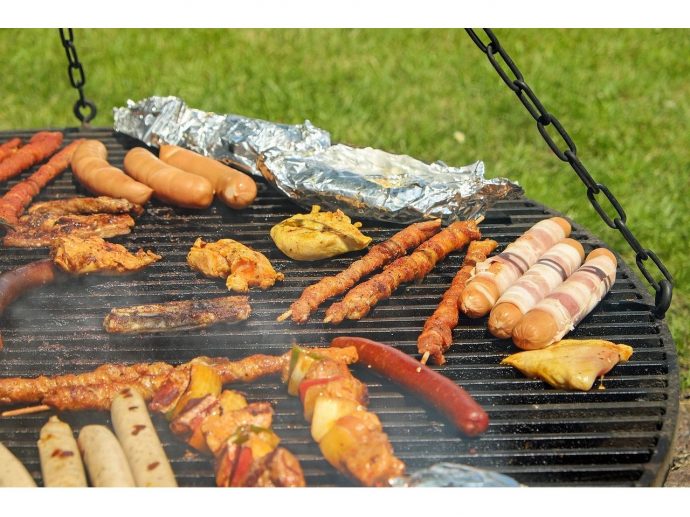Categories more
- Adventures (17)
- Arts / Collectables (15)
- Automotive (37)
- Aviation (11)
- Bath, Body, & Health (77)
- Children (6)
- Cigars / Spirits (32)
- Cuisine (16)
- Design/Architecture (23)
- Electronics (13)
- Entertainment (4)
- Event Planning (5)
- Fashion (45)
- Finance (9)
- Gifts / Misc (6)
- Home Decor (44)
- Jewelry (41)
- Pets (3)
- Philanthropy (1)
- Real Estate (15)
- Services (23)
- Sports / Golf (14)
- Vacation / Travel (60)
- Watches / Pens (14)
- Wines / Vines (24)
- Yachting / Boating (17)
Ensure Delicious and Safe Grilling with These Expert Techniques and Tips
Published
08/26/2024Grilling is a fun activity that combines cooking with enjoying the outdoors. Over the years, BBQ has become an important tradition in many cultures. As more people get into grilling, it's vital to understand the importance of safety. Safe grilling isn't just about enjoying tasty food; it's also about preventing accidents that could ruin the fun.
As we look into this topic, we'll cover key safety tips and advanced techniques to improve your grilling skills. From preparing before you start, to controlling temperature, avoiding flare-ups, and cleaning up afterward, you'll learn steps to ensure both delicious and safe results, especially when pairing with a good BBQ rub seasoning. Whether you're new to grilling or a seasoned pro, these tips will help you make every grilling session both enjoyable and safe.
Preparing Your Grill for Safety
Before you start grilling, be sure to inspect and clean your grill to ensure a safe and smooth cooking session. For gas grills, check for gas leaks, worn hoses, or loose connections that could pose risks. If you're using a charcoal or wood smoker, thoroughly remove any leftover ash and grease that might block airflow or cause dangerous flare-ups.
Additionally, make sure the grates are free of rust or debris to prevent food contamination. Ensuring everything is in good working order not only prevents accidents but also helps maintain even heat distribution, enhancing your cooking results. Taking just a few minutes for these checks can save you from unexpected problems and let you focus on creating delicious meals for your guests.
Setting Up Your Grilling Station
Arrange your grilling area thoughtfully for both safety and efficiency. Position your grill in a well-ventilated spot, away from flammable objects like tree branches, wooden decks, or patio furniture. This reduces fire risks and ensures proper airflow for even cooking.
Keep your tools, like tongs and spatulas, and ingredients neatly organized and within easy reach, using hooks or a small side table if needed. A clutter-free space not only improves safety but also lets you focus on perfecting your grill marks, enhancing the overall experience for you and your guests.
Temperature Control and Meat Safety
Managing heat properly is key to grilling food that’s both tasty and safe. Understanding direct and indirect grilling can greatly improve your grilling skills. Direct grilling, where the food is placed right over the heat, is great for quick-cooking items like burgers and vegetables. On the other hand, indirect grilling, which cooks food away from the heat, is better for slow, even cooking, ideal for larger cuts of meat.
Using a meat thermometer is a must to avoid undercooking or overcooking. For safe eating, remember the recommended internal temperatures: 145°F for beef, lamb, and pork, and 165°F for poultry. Mastering these techniques will not only make your food more flavorful but also ensure it's safe to eat.
Preventing Flare-Ups and Managing Fire
To prevent flare-ups and manage fire, start by getting rid of excess grease. Flare-ups happen when grease drips onto the flames, causing sudden bursts of fire that can burn you and ruin your food. Regularly clean your grill grates and grease traps to lower this risk. Use water sparingly for small flare-ups; too much water can spread grease fires and create dangerous steam.
Instead, keep a spray bottle handy for quick control. Adjusting the grill vents to manage oxygen flow is also key; less oxygen means smaller flames and safer cooking. Position your food carefully and trim excess fat before grilling to further reduce flare-ups, making your grilling safer and more enjoyable.
Post-Grilling Safety and Grill Maintenance
Properly shutting down your grill is just as important as cooking. For gas grills, turn off the gas supply, and for charcoal grills, make sure the embers are completely out by closing the vents. Afterward, clean the grill thoroughly to remove leftover food and grease, which helps prevent bacteria and lowers the risk of fire the next time you use it.
Scrub the grates with a wire brush and empty the grease trap, if there is one. Once clean, store the grill in a dry, sheltered spot to protect it from the weather, which helps it last longer. Following these steps prevents accidents and keeps your grill ready for your next BBQ.
Grilling offers a perfect blend of culinary creativity and outdoor enjoyment, but it's essential to prioritize safety to make the experience truly rewarding. By taking the time to inspect, clean, and properly set up your grilling station, you minimize risks and set the stage for a successful cookout. Understanding heat control, preventing flare-ups, and maintaining your grill after each use are key practices that ensure not just flavorful food but a safe environment. These simple yet necessary steps allow you to focus on what truly matters—sharing delicious meals with loved ones.















